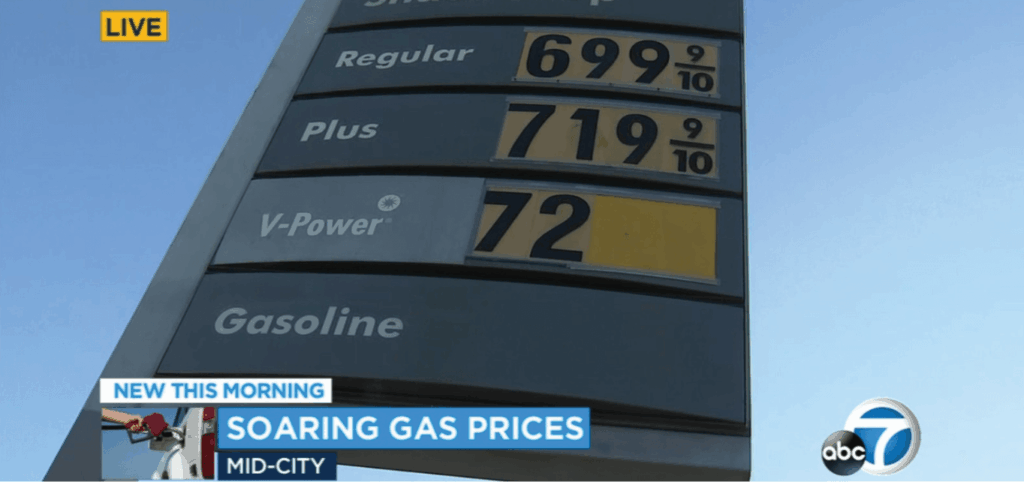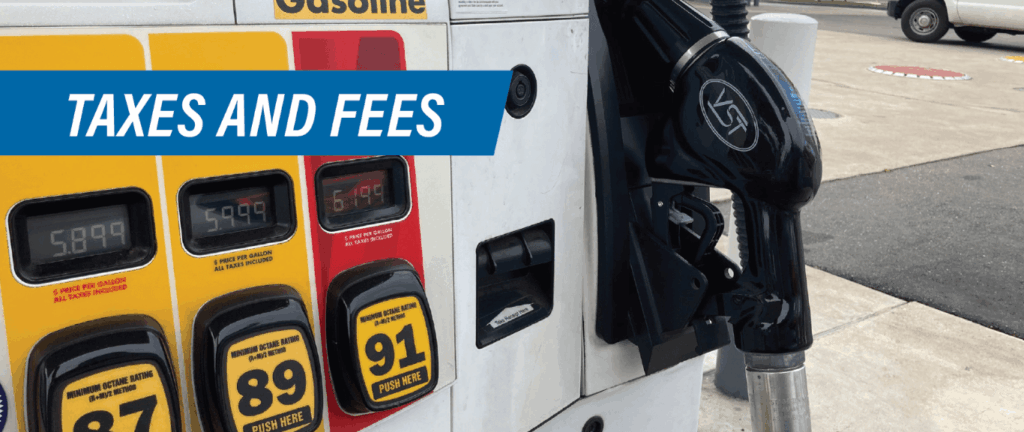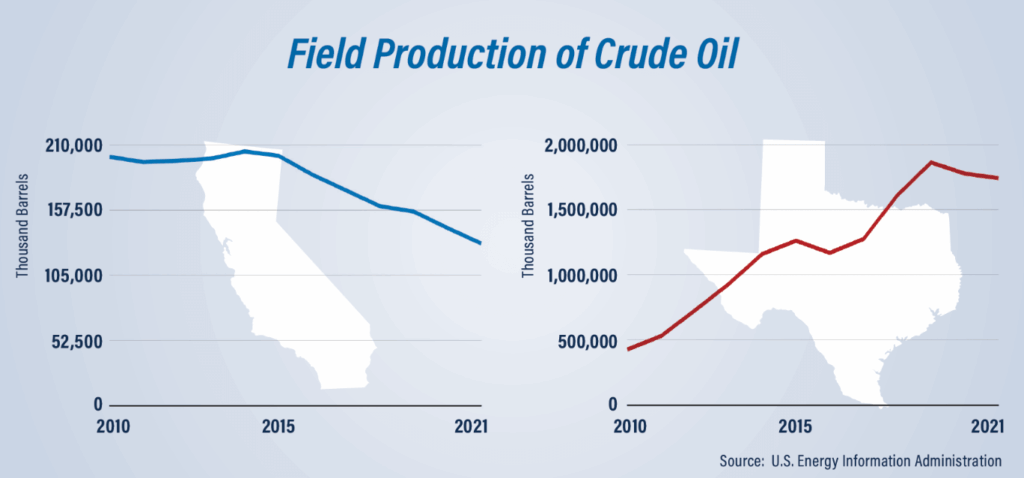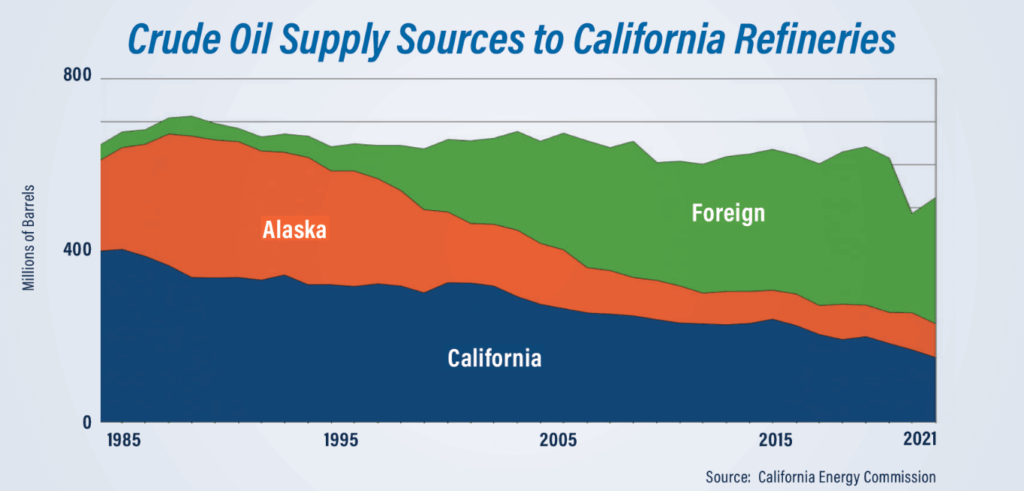
Welcome to Happening in California, a brief look at political news, insights, and analysis of the world’s fifth-largest economy.
Do you remember the last time you saw a gallon of gas for under a dollar?
For me, it was around 1999 at a gas station on Highway 99 in California’s Central Valley. Since then, gas prices in California have risen by about 500%.
While the entire nation is currently experiencing a surge in pump prices, gas in California is still the highest in the nation — averaging $0.75 more per gallon than the second highest-priced state, Hawaii, according to AAA.
So, are California’s high gas prices destiny for the rest of the nation? Let’s take a look …
Cheers,
Tom Ross | President and CEO | Swing Strategies
P.S. Share this page using the social icons on the page. Also you can share the link of this page and encourage friends to sign up using the form at the bottom of this page.

The Big Picture: With prices reaching $7 per gallon, California’s highest-in-the-nation gas prices are largely driven by policies enacted in Sacramento.
California’s high gas prices are the result of two primary factors:

When you purchase gas in California, the receipt doesn’t contain an itemization of the taxes and fees.
However, we do know that the federal gas tax is 18.4 cents per gallon.
We also know that California’s gas tax has increased by 17% since 2014 and now stands at 51.5 cents per gallon. Plus starting in 2020, the state’s gas tax is now annually adjusted for inflation. So come this July, California’s gas tax is estimated to increase by at least 3 cents per gallon.
More opaque are the costs of California’s fees and regulations. Last week, Stillwater Associates released an analysis that breaks out some of these costs for a gallon of gas:
In total, Californians pay $1.27 in taxes and fees per gallon of gas.

For the past decade, California has taken aggressive action to achieve carbon neutrality. In 2013, California launched its cap-and-trade program — the nation’s first economy-wide carbon market.
And just this last year, Governor Newsom has announced plans to ban new oil drilling near communities and phase out all oil production by 2045.
Local governments are also taking steps to limit oil production with Los Angeles recently voting to ban new oil wells and phase out old wells over the next five years.
While California is historically one of the leading producers of oil in the United States, the state’s oil output has fallen sharply despite the U.S. shale revolution that has benefited other states like Texas. Since 2000, California’s oil production has declined by 52% while Texas oil production has skyrocketed by more than 300%.
As a result, California has increased its dependency on foreign oil, while at the same time consuming a record amount of gasoline in the years before the pandemic.

In 2000, half of the oil supplied to California refineries was produced in-state and just 26% was foreign sourced. Those numbers have now flipped: 30% is produced in California and 56% is produced overseas — from Iraq and Saudi Arabia to Ecuador and yes, even Russia.
In an uncertain world, dependence on foreign oil leads to higher prices for gasoline. However, what is yet to be determined is whether California will achieve its aim of reducing demand for oil.
For instance, Governor Newsom is taking executive action to ban the sale of new gas cars by 2035.
And starting in 2024, California will ban the sale of gas-powered lawn equipment and in 2028, it will ban the sale of gas-powered generators. Lawmakers in other states like Illinois and New York are also considering bans on gas-powered lawn equipment.
The Bottom Line: California’s record-high gas prices will continue to set the pace in the nation …
… and other states that follow California’s tax and regulatory lead will see similar high prices at the pump.